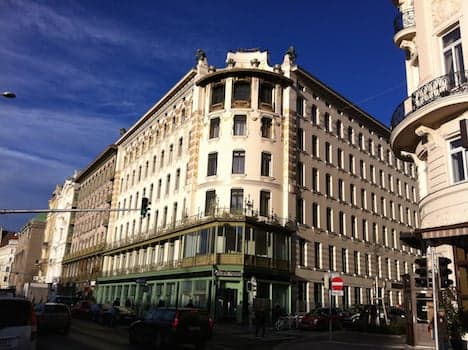Rents in Austria up 15 percent in five years

Residential rents in Austria have risen by a whopping 15.1 percent in the last five years, according to new figures from government agency Statistik Austria.
The highest increase (18 percent) was for privately rented houses and apartments - with the average monthly rent (including maintenance costs) now €8 per square metre.
Rents for council-owned houses and flats have risen by 13.3 percent to €6.1 per square metre. Rents for cooperative apartments (which are subsidized and require the tenant to pay 12.5 percent of construction costs) rose by 11.2 percent to €6.2 per square metre.
According to Statistik Austria around 21 percent of households in Austria have taken out a loan to help with rental costs - and 38 percent of these households have children.
200,000 households (or five percent) have trouble repaying a loan or meeting their rental costs.
Rental costs for tenants with older rental contracts are typically much lower, whereas tenants signing new contracts are paying an average of €7.8 per square metre. Households with long-term leases of more than 30 years spend on average just €4.6 per square metre, including maintenance costs.
Despite the steep price increases of recent years, housing in Austria is still relatively cheap by international standards, partly as a result of government-subsidised residential construction.
Rents in Vienna and Salzburg are highest, at around €14.50 per square metre per month.
Apartments are more affordable in Graz, with rents ranging from €10.50 to €12.50 per square metre per month.
Vienna has one of the highest percentages of renter households in the world, with about 75% of residential properties rented.
In Austria as a whole, households own 56.4 percent of primary residences, while 41.2 percent are rented. Austria’s home ownership rate is way below the European Union’s average rate of more than 70%.
The high percentage of rented residential properties is partly due to the large proportion of subsidized low-rent apartments in the general rental market, and also down to limited tax incentives for homeownership.
Comments
See Also
The highest increase (18 percent) was for privately rented houses and apartments - with the average monthly rent (including maintenance costs) now €8 per square metre.
Rents for council-owned houses and flats have risen by 13.3 percent to €6.1 per square metre. Rents for cooperative apartments (which are subsidized and require the tenant to pay 12.5 percent of construction costs) rose by 11.2 percent to €6.2 per square metre.
According to Statistik Austria around 21 percent of households in Austria have taken out a loan to help with rental costs - and 38 percent of these households have children.
200,000 households (or five percent) have trouble repaying a loan or meeting their rental costs.
Rental costs for tenants with older rental contracts are typically much lower, whereas tenants signing new contracts are paying an average of €7.8 per square metre. Households with long-term leases of more than 30 years spend on average just €4.6 per square metre, including maintenance costs.
Despite the steep price increases of recent years, housing in Austria is still relatively cheap by international standards, partly as a result of government-subsidised residential construction.
Rents in Vienna and Salzburg are highest, at around €14.50 per square metre per month.
Apartments are more affordable in Graz, with rents ranging from €10.50 to €12.50 per square metre per month.
Vienna has one of the highest percentages of renter households in the world, with about 75% of residential properties rented.
In Austria as a whole, households own 56.4 percent of primary residences, while 41.2 percent are rented. Austria’s home ownership rate is way below the European Union’s average rate of more than 70%.
The high percentage of rented residential properties is partly due to the large proportion of subsidized low-rent apartments in the general rental market, and also down to limited tax incentives for homeownership.
Join the conversation in our comments section below. Share your own views and experience and if you have a question or suggestion for our journalists then email us at [email protected].
Please keep comments civil, constructive and on topic – and make sure to read our terms of use before getting involved.
Please log in here to leave a comment.